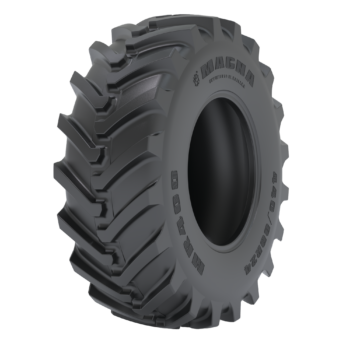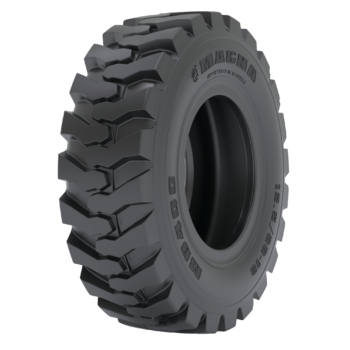
-
IND

MR400
- 460/70R24
- 500/70R24
- 540/70R24
- 400/70R24
- 400/80R24
- 440/80R24
- 440/80R28
- 480/80R26
-
IND

MB400
- 10.5/80-18
- 12.5/80-18
Role of Backhoe Loader in the industry
A backhoe loader operates as a dual-purpose machine that supports excavation, loading and material handling within demanding workflows. It is widely used on construction sites and in agricultural operations where versatility and continuous uptime are essential. These machines manage trenching, backfilling, earthmoving and transport tasks in confined and open environments, often under variable loads and mixed soil conditions. The presence of tyres such as the MR400 and MB400 illustrates the requirement for durable casings, dependable traction and controlled deformation during lifting or digging cycles, ensuring stable operation on hard surfaces, loose ground and compacted soil.
Types of Tyres Used in these Machines
Backhoe loaders rely on a combination of front steering tyres and rear traction-focused tyres, each fulfilling a different operational function. Front tyres typically prioritise stability, directional control and predictable handling, especially when manoeuvring with a loaded bucket on construction sites or when operating across uneven agricultural terrain. Rear tyres require deeper lugs, stronger sidewalls and a construction that withstands repeated digging forces, shock loads and surface transitions. Selecting between radial and bias constructions depends on load distribution, working speed and surface consistency. Tyres designed for mixed-service environments must provide a balance between tread wear, grip on soft ground and durability on abrasive surfaces, making correct specification critical for safe and continuous use of Backhoe Loader Tyres.
Tyre Requirements for Reliable Performance
Tyres for backhoe loaders must deliver structural integrity under heavy vertical loads, maintain traction during excavation, and resist impact damage from debris and uneven surfaces. Stability during bucket lifts and trenching depends on a tread pattern capable of consistent ground engagement without excessive slip. The casing must manage heat build-up during long working cycles, while the bead area must secure the tyre during high side-loads and sudden directional changes. Flotation is essential when operating on soft or disturbed soil, helping to reduce sink-in and maintain operational efficiency. A well-matched tyre also supports precise manoeuvring in confined areas, preventing unnecessary stress on the drivetrain and contributing to predictable, safe performance throughout continuous-duty applications.
Questions? We're Always Ready.
Still have questions? Check the FAQs below or connect with one of our specialists.
Which tyre options are commonly used on backhoe loaders operating in mixed construction environments?
Backhoe loaders typically use sizes such as 400/70R24, 440/80R24 or 460/70R24, offering sufficient load support, stable handling and reliable traction for digging, loading and frequent repositioning.
How do ground conditions influence the tyre requirements for a backhoe loader?
These machines work on uneven, muddy or compacted surfaces, so tyres need deep tread and durable sidewalls to maintain grip, resist cuts and ensure predictable performance across varying soil types.
Why is selecting the correct tyre size essential for backhoe loader stability?
Correct sizing ensures proper rim fit, supports lifting forces at both loader and excavator ends, maintains balanced weight distribution and prevents premature wear under frequent directional changes.
What tyre characteristics help maximise uptime on a backhoe loader?

